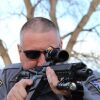Every continuing education class I teach – outside of basic orientation – requires certain standards to be achieved by the student. By standards, I mean a minimum level of competence must be demonstrated by the student in order to pass the course; a test. Every certificate on my wall required that I achieve and demonstrate a predetermined level of competence.
However, some have questioned the need for standards in training. In fact, many instructors do not require students to perform to a set of standards at all. This practice is commonly called “pencil-whipping certificates,” and it is generally not a good idea for law enforcement training.
Why do standards matter and what purpose do they serve? There are three areas on which to focus: Performance, competence and credibility.
Performance
I’ve noticed in both law enforcement and private classes that people tend to perform to a higher level when more is required of them. Lower standards – or no standards – require less work, less diligence and allow for a lower level of learning.
This point is well demonstrated in state-mandated concealed carry classes. In many states, including mine, the class requires a written test, a demonstration of safety but no real demonstration of competence with a firearm. Having many of those folks as students in my private and law enforcement classes over the years confirmed this theory for me. Those students usually have solid safety habits but little if any real competence in marksmanship, holster usage or general gun handling. How could they when it wasn’t a requirement of their training?
Competence
Back on the cop side of things: My state’s law enforcement pistol qualification course was modified substantially in the 2000s. The new course added some great elements lacking in its predecessor but overall is much easier to pass. The most glaring difference between the two courses is the distances required.
Forty percent of the student’s score on the original course was from 25 and 50 yards. Obviously, an officer in training would not pass the course without the ability to shoot reasonably well at distance. The current course has no 50-yard stage and it is possible to pass without scoring any shots from the 25-yard line.
Considering actual law enforcement firearms engagement data, these closer distances are indeed much more consistent with what an officer may encounter in real life. However, considering cops nationwide tend to miss more than they hit in real-world encounters, a higher level of marksmanship is always a good thing. A mentor of mine says there’s no such thing as a miss because every shot fired eventually hits something.
Curious whether the change in standard had any effect, a few of my fellow firearms instructors put together some unofficial statistics on law enforcement hit ratios (the percentage of shots fired that hit their intended target) in our area. It was concluded that the hit ratio dropped from the high 70% range to just under 50% after the new standard was put in place. That’s almost a 30-point downward swing. Again, this was an informal study but it’s pretty consistent with what we’ve all seen.
Credibility
Credibility is imperative to law enforcement or really any skills training program. As an example, I put together a private firearms instructor development program. It’s an intensive 20-hour class geared toward teaching my state’s handgun license class. Credibility is imperative for a class like that. I submitted all of my materials to the state’s licensing agency. That program is now one of only a handful that meets the standards for handgun license instructors here. Doesn’t the state’s endorsement add some credibility to the class? If you were an aspiring instructor, wouldn’t that mean something to you?
Creditability is a component of legal liability considerations. How would a course without standards hold up against legal scrutiny? If current history is an indicator, not very well. Implementing solid, legally defensible standards will alleviate some of that liability. Also, how would anyone know if your program is successful unless you have a way to measure learning?
Setting the Standard
Now, how do we go about setting those standards? I use the same process as when setting goals. Standards must be measurable, attainable and realistic. General and basic-level classes should have a minimum standard of 70% for both written, oral and practical testing. Instructor certification courses should have a minimum standard of 90%. That is in both written and practical tests. Those are measurable standards. There must be a balance between a standard that is too difficult for the student base and one that is so easy it doesn’t require a meaningful amount of effort to accomplish. That will make the standard attainable and realistic.
The Test
Using the word “test” during a class tends to unnerve students. Still, that is what we are talking about when we set standards. Testing should not be avoided. In fact, it should be seen as the final component of training. Instructors owe it to their students to provide the best learning experience possible. Without standards, we are doing our students a disservice. Please take the time and effort to set and implement standards for your continuing education classes. If you want your students to be able to perform the difficult tasks that we ask of them on the streets, they must be able to do it in training.





